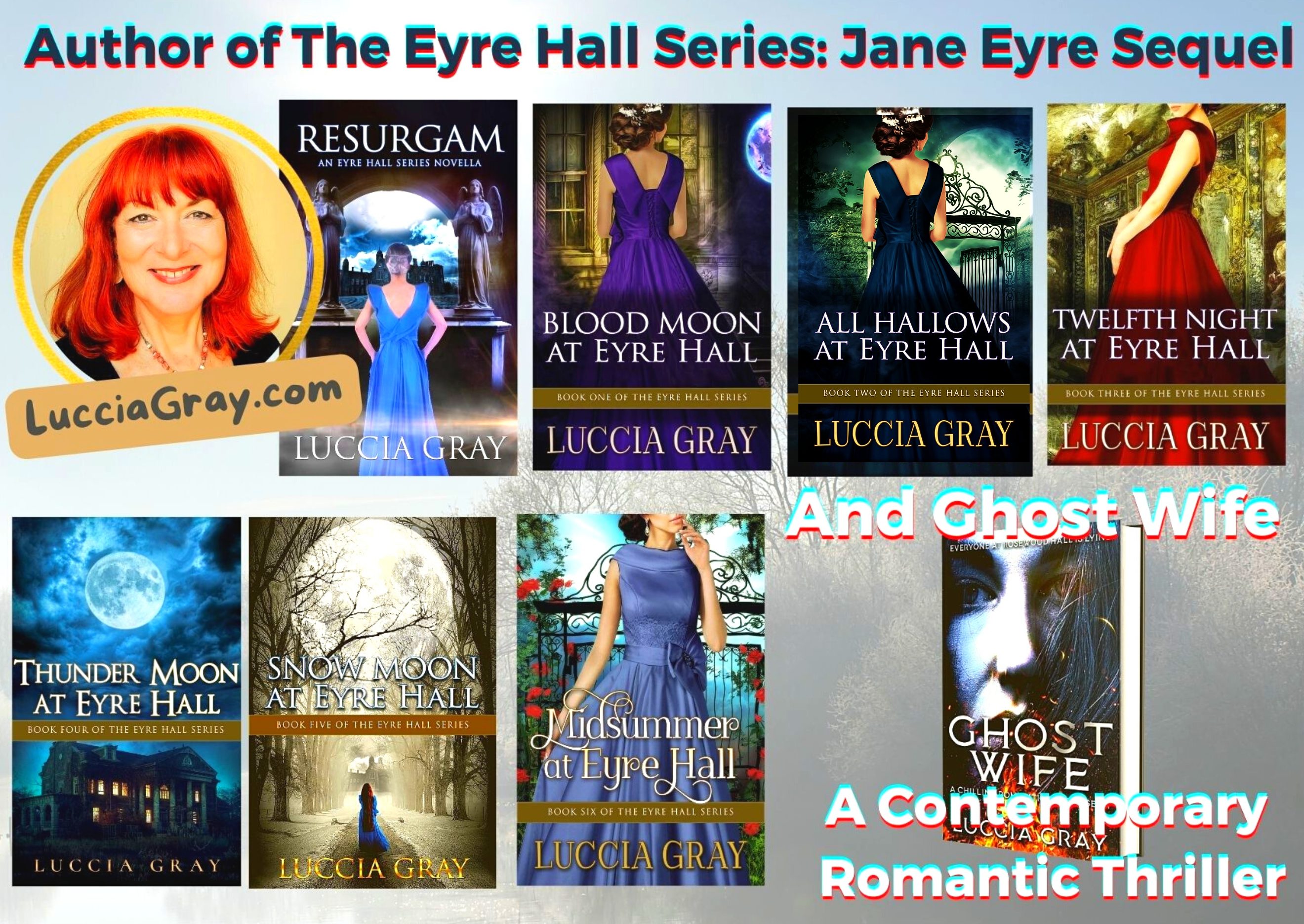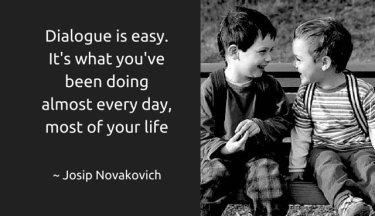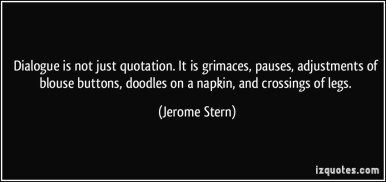I love writing dialogue and I include plenty of dialogue in my novels, but I also find it’s one of the hardest parts to get just right.
Writing the dialogue itself isn’t so demanding, it’s padding it with all the necessary contextual information within a novel that causes the problems.
Here are some notes I’ve made for myself to remind me of what I need to think about and do to make my dialogues relevant, vivid, authentic and natural.
****
Dialogue is a great way to show (not tell) the reader about character and plot.
Think about the purpose of the exchange, and remember that every scene in the novel should:
1) Show character Or 2) Reveal plot
1- Show character
This can be done subtly or specifically, depending on the importance of the character or the aspect you want to disclose.
What does the character say? And how does this show how he thinks or feels about what he’s done or is going to do, or about other characters… Are the characters lying? Purposefully? Inadvertently?
2- Develop plot:
It’s also a great way to reveal plot or add a plot twist (or red herring!).
- Is there something new you want the reader to know? Is it part of the plot? A plot twist? A lie to confuse the characters and/or reader?
- Is it a past event you to remind the reader about (in a series) or something the reader has not been told before?
- Is it foreshadowing or giving clues to an event which may soon be taking place?
What to add/think about when writing your dialogue.
If you were writing a play, you wouldn’t have to think much about this. You could add some stage directions, but mainly the director and/or the actors would add the speaker’s actions, clothes, setting, props etc. to the dialogue. In a novel, the writer has to think of ways of transmitting this information.
Characters aren’t still or in a vacuum when they talk. They’re doing things and thinking about things. Their senses are aware, so they can hear, see, smell, taste and feel. They’re in a specific place which can bring memories or give them specific vibrations. They’re with people who can make them feel differently, too.
Although the actual conversation is our aim, and it’s probably what we write first, at least I usually do, later on we need to make it real. Create the context for the reader to understand and feel what the characters feel, which is not necessarily the information they give when they’re actually speaking.
Some specific questions to ask yourself:
- Where are the characters? In general (e.g. a hotel) and specifically (e.g. on the terrace in their room)
- Why that place in particular and not another?
- What are they seeing? Near (e.g. on the floor) and far (e.g. on the horizon).
- What are they thinking about? Present conversation? Past events? The place? The person they’re talking to?
- What are they hearing? What does it remind them of? How does it make them feel?
- What can they smell? What reaction does this have on them?
- Are they sitting, standing, moving? Are they doing something while they talk?
- What kind of atmosphere do you want to create? Tense? Romantic? Mysterious? Relaxed?
- What are their facial expressions, movements and gestures like?
- Are they interested or pleased to be having the conversation? If not, where would they like to be? Or what would they like to be doing?
- What are they wearing? What does it tell us about them? The place? The situation? The time of year?
- What’s their relationship? Does the reader already know? Does he need to know anything else? What do they think of each other?
- What’s their motivation for the conversation? Was it prepared, unexpected, on one side or both?
- What day is it? Time of year? What’s the weather like?
- What have they been doing before?
- What are they going to do next?
- What’s on their mind?
- What’s happening around them?
- Who’s entering and leaving the place or the conversation?
- Are the speakers alone? If not think about other people there, what are they doing? listening, watching, oblivious…
Remember:
Identify the aim of the conversation regarding character and plot.
Don’t ramble or tell the reader things they already know.
Reduce tags and tags with adverbs to a minimum.
You can make characters unique by the things they say, expressions, or gestures they often make, the clothes they wear, etc.
Read it out loud: think about length, repetition, authenticity, flow, does your main point (plot/character) come across? You’ll probably need to tweak it a few times, at least I certainly do!
****
I have these questions pinned to my notice board. I refer to them once I’ve written the first draft of the conversation. It helps me give more depth to my dialogues.
I’d love to hear from you:
How do you approach your dialogues?
Do you write them straight off or do they go through various stages?
Any more tips / ideas for writing dialogue?





I often include dialogue in stories just so I can practice writing it and it frequently leads to interesting plot developments. (I think my characters know better than me what’s happening in my stories, so I let them determine the direction it takes)
LikeLiked by 1 person
Yes! I also listen to my characters a lot, when I write the dialogues and when I imagine or think about them. They definitely know more about what’s happening and going to happen than I do!
LikeLiked by 1 person
I love writing dialogue but it is crucial to read it aloud as that soon reveals if it works or not. The other thing to remember is that in a real conversation no one ever speaks for very long, there’s a constant back and forth so beware of long paragraphs that can seem like an information dump.
LikeLiked by 1 person
That’s a great tip too! I agree that shorter interactions are more realistic and better for the reader too.
LikeLiked by 1 person
Reblogged this on The Writers' Workshop Blog and commented:
Great tips here on writing dialogue, from Luccia Gray.
LikeLiked by 1 person
Thank you, Jean. Glad you liked my tips 🙂
LikeLiked by 1 person
They are good reminders to have on hand. I’m going to print them out and put them over my desk. Thanks, Luccia.
LikeLiked by 1 person
This is a great list of questions to ask yourself when writing dialogue. Thanks for sharing it, Luccia. I’d like to reblog it, if that’s okay. I use lots of dialogue in my books. I can see and hear the interactions between my characters like a movie playing out in my head. This really helps me to feel what they are experiencing. Sometimes, I even wake up with a conversation between my characters going on in my mind and I have to write it down straight away in case I forget it. So I sleep with a notebook and pen next to my bed.
LikeLiked by 1 person
Yes. That’s how I ‘see’ and ‘hear’ the conversations between my characters too. There’s so much to take into account, and of course every dialogue is different, but I find the list of questions helps me fill in the dialogue once the outline or first draft is there. I always carry a notebook because ideas come suddenly and unexpectedly, I often jump out of bed to scribble an idea or bit of conversation, too!
Thanks for reblogging and commenting. Lovely to ‘meet’ you 🙂
LikeLiked by 1 person
Thank you for sharing this. Love the questions to ask when writing.
LikeLiked by 1 person
Thank you for reading and commenting 🙂
LikeLike